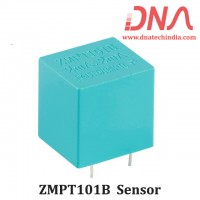| All digital circuits require regulated power supply. In this article we are going to learn how to get a regulated positive supply from the mains supply. | |||
|
|||
| TRANSFORMER:- | |||
|
|||
|
A transformer consists of two coils also called as “WINDINGS” namely PRIMARY & SECONDARY. They are linked together through inductively coupled electrical conductors also called as CORE. A changing current in the primary causes a change in the Magnetic Field in the core & this in turn induces an alternating voltage in the secondary coil. If load is applied to the secondary then an alternating current will flow through the load. If we consider an ideal condition then all the energy from the primary circuit will be transferred to the secondary circuit through the magnetic field. |
|||
|
So Pprimary=Psecondery IpVp=IsVs The secondary voltage of the transformer depends on the number of turns in the Primary as well as in the secondary.. Vs/Vp=Ns/Np |
|||
| RECTIFIRE:- | |||
|
A rectifier is a device that converts an AC signal into DC signal. For rectification purpose we use a diode, a diode is a device that allows current to pass only in one direction i.e. when the anode of the diode is positive with respect to the cathode also called as forward biased condition & blocks current in the reversed biased condition. Rectifier can be classified as follows: Half Wave rectifier:- |
|||
|
|||
| Full wave rectifier:- | |||
|
|||
|
Half wave rectifier is quite simple but it is very inefficient, for greater efficiency we would like to use both the half cycles of the AC signal. This can be achieved by using a center tapped transformer i.e. we would have to double the size of secondary winding & provide connection to the center. So during the positive half cycle diode D1 conducts & D2 is in reverse biased condition. During the negative half cycle diode D2 conducts & D1 is reverse biased. Thus we get both the half cycles across the load. One of the disadvantages of Full Wave Rectifier design is the necessity of using a center tapped transformer, thus increasing the size & cost of the circuit. This can be avoided by using the Full Wave Bridge Rectifier. |
|||
| Bridge Rectifier:- | |||
|
|||
|
As the name suggests it converts the full wave i.e. both the positive & the negative half cycle into DC thus it is much more efficient than Half Wave Rectifier & that too without using a center tapped transformer thus much more cost effective than Full Wave Rectifier. Full Bridge Wave Rectifier consists of four diodes namely D1, D2, D3 and D4. During the positive half cycle diodes D1 & D4 conduct whereas in the negative half cycle diodes D2 & D3 conduct thus the diodes keep switching the transformer connections so we get positive half cycles in the output. |
|||
|
|||
| If we use a center tapped transformer for a bridge rectifier we can get both positive & negative half cycles which can thus be used for generating fixed positive & fixed negative voltages. | |||
| FILTER CAPACITOR:- | |||
|
Even though half wave & full wave rectifier give DC output, none of them provides a constant output voltage.For this we require to smoothen the waveform received from the rectifier. This can be done by using a capacitor at the output of the rectifier this capacitor is also called as “FILTER CAPACITOR” or “SMOOTHING CAPACITOR” or “RESERVOIR CAPACITOR”. Even after using this capacitor a small amount of ripple will remain. We place the Filter Capacitor at the output of the rectifier the capacitor will charge to the peak voltage during each half cycle then will discharge its stored energy slowly through the load while the rectified voltage drops to zero, thus trying to keep the voltage as constant as possible. |
|||
|
|||
|
If we go on increasing the value of the filter capacitor then the Ripple will decrease. But then the costing will increase. The value of the Filter capacitor depends on the current consumed by the circuit, the frequency of the waveform & the accepted ripple. C=VrF/I Where, Vr= accepted ripple voltage.( should not be more than 10% of the voltage) I= current consumed by the circuit in Amperes. F= frequency of the waveform. A half wave rectifier has only one peak in one cycle so F=25hz whereas a full wave rectifier has Two peaks in one cycle so F=100hz. VOLTAGE REGULATOR :- A Voltage regulator is a device which converts varying input voltage into a constant regulated output voltage. voltage regulator can be of two types 1) Linear Voltage Regulator Also called as Resistive Voltage regulator because they dissipate the excessive voltage resistively as heat. 2) Switching Regulators. They regulate the output voltage by switching the Current ON/OFF very rapidly. Since their output is either ON or OFF it dissipates very low power thus achieving higher efficiency as compared to linear voltage regulators. But they are more complex & generate high noise due to their switching action. For low level of output power switching regulators tend to be costly but for higher output wattage they are much cheaper than linear regulators. The most commonly available Linear Positive Voltage Regulators are the 78XX series where the XX indicates the output voltage. And 79XX series is for Negative Voltage Regulators. |
|||
|
|||
| After filtering the rectifier output the signal is given to a voltage regulator. The maximum input voltage that can be applied at the input is 35V.Normally there is a 2-3 Volts drop across the regulator so the input voltage should be at least 2-3 Volts higher than the output voltage. If the input voltage gets below the Vmin of the regulator due to the ripple voltage or due to any other reason the voltage regulator will not be able to produce the correct regulated voltage. |











